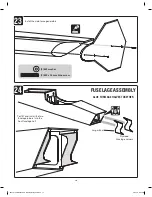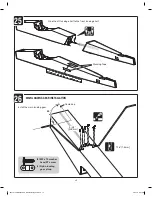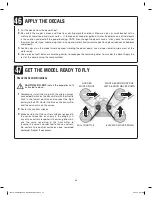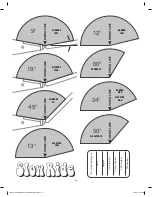
28
3-3/4" [95 mm] to 5-1/2" [140 mm]
3-3/4"
[95 mm]
5-1/2"
[140 mm]
51
52
Balance the Model Laterally
Balance the Model C.G.
1.
With the wing level, have an assistant help you lift the
model by the propeller shaft and the bottom of the
fuse under the TE of the fin. Do this several times.
2.
If one wing always drops when you lift the model, it
means that side is heavy. Balance the airplane by
adding weight to the other wing tip.
An airplane that
has been laterally balanced will track better in
loops and other maneuvers.
CAUTION: DO NOT OVERLOOK THIS IMPORTANT
PROCEDURE.
A model that is not properly balanced may be
unstable and possibly unflyable.
1.
Mark the C.G location on the bottom of the wing 3-3/4" [95 mm] to 5-1/2" [140 mm] from the leading edge.
2.
With the plane
ready to fly
, and the motor batteries installed but not plugged in, use a Great Planes C.G. Machine
or apply narrow (1/16" [2mm]) strips of tape at the front and rear C.G. locations. Lift the model between the strips
of tape with your fingers to check the C.G. location.
Do not balance the model outside this C.G. range.
3.
First, move the flight battery forward or aft
to adjust the C.G. location. If the plane still
balances outside the range use Great Planes
“stick on” weight (GPMQ4485) to balance the
plane. Place incrementally increasing amounts
of weight on the bottom of the fuselage over
the location where it would be mounted inside
until the model balances. A good place to
add stick-on nose weight is to the firewall or
inside the LiPo compartment. Once you have
determined if additional weight is needed,
permanently attach the weight with glue or
screws.
4.
IMPORTANT:
If you found it necessary to
add any weight, recheck the C.G. after the
weight has been installed.
58575.1 TOWA2042 Slow Ride Manual Update.indd 28
5/22/18 9:31 AM





































